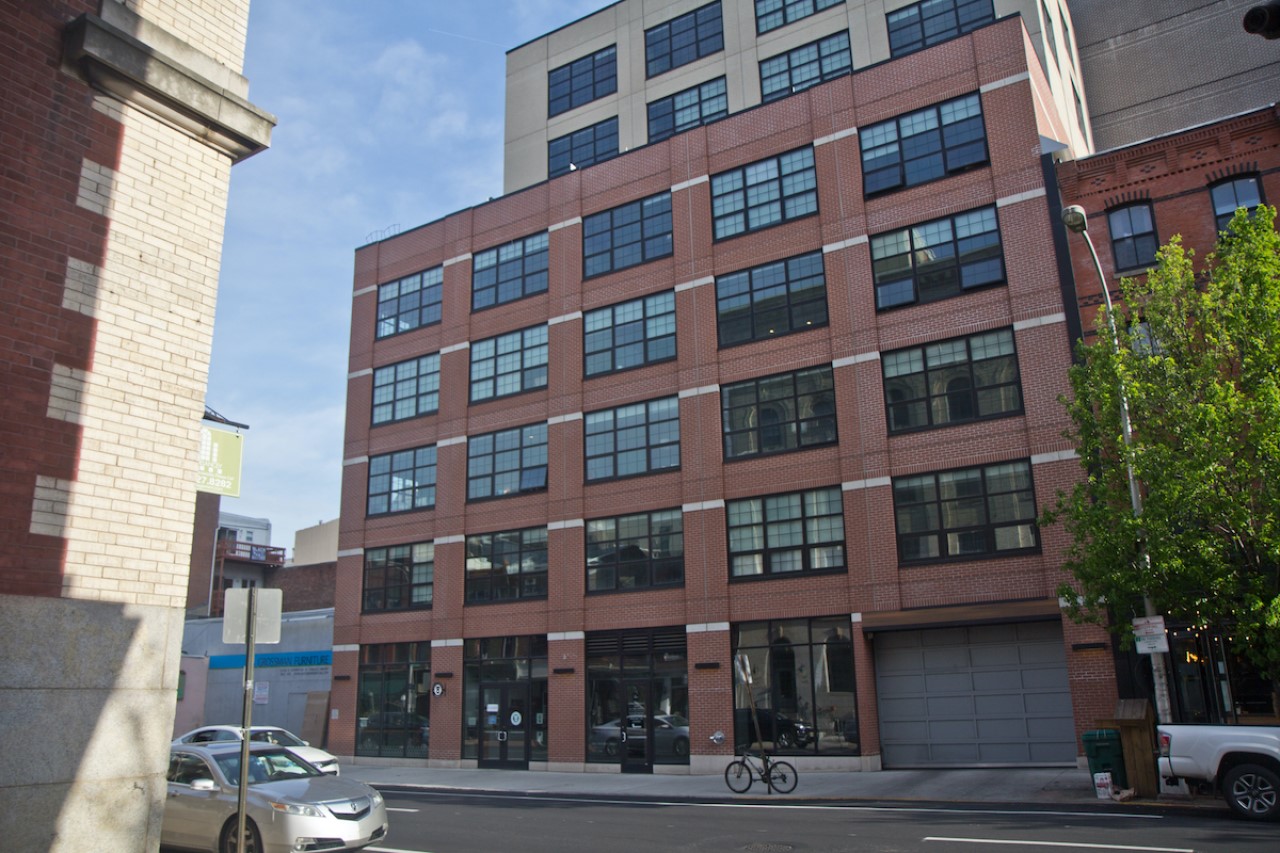
218 Arch Street in May 2022. (Kimberly Paynter/WHYY)

218 Arch Street in May 2022. (Kimberly Paynter/WHYY)

218 Arch Street in May 2022. (Kimberly Paynter/WHYY)
In 2016, while setting the foundation for a new condominium at 218 Arch Street in Philadelphia, construction workers unearthed something shocking: a box full of bones.
They had unknowingly stumbled upon remnants of the First Baptist Church cemetery, which had occupied the Arch Street site in the 18th century.
The findings sparked publicity and confusion over who the remains belonged to and what should happen to them, given that the site is private property. Scientists, archaeologists, and historians have since worked with the development company and the First Baptist Church to document the stories of the people who were buried there and to learn more about 18th century Philadelphia.
At 7 p.m. on Wednesday, May 11, Rutgers-Camden University researchers will host a virtual public forum to share more about what they are calling the Arch Street Project.
The researchers stress that they do not conduct any research on this project without the express permission of the church.
The people whose bones were uncovered at the First Baptist Church cemetery site (and will be reburied in September 2023 at Mount Moriah Cemetery in Yeadon, Pa.) represent a cross section of Philadelphia society at the time. This is unusual for cemeteries back then, said historian Nicholas Bonneau. He is part of the research group studying the burial grounds and teaches the history of science and public health at the University of Maryland Baltimore County.
He explained that until the late 19th century, many burials in churchyards were people born into a particular congregation, faith, or community. However, since Baptists decide to join the faith, rather than are born into it, those who were buried at the First Baptist Church cemetery included people who may have come from different congregations or walks of life. Bonneau said that, in fact, of the 3,000 people buried at the Arch Street cemetery, most were not paying members of the First Baptist Congregation.
“So we get from 1709 all the way up to the dawn of the Civil War, a really great cross-section of Philadelphia life and better than any other cemetery could have provided us,” Bonneau said. “This has been a fantastic way to get a glimpse into what Philadelphia life was like in those important periods of transition.”
Bonneau has studied the historic records of the church itself and other archives and found that the people buried at the cemetery include brick layers, clock makers, sailors, politicians from other states who came to the Congress in Philadelphia and died here, and at least one artist whose works are on display at the New York Metropolitan Museum of Art.
He is working with the scientists in the group to identify people, so they can be put together in family groups when they are reburied next September.
One of those scientists is Anna Dhody, a physical anthropologist and director of the Mütter Research Institute at the Mütter Museum. She said she and her research collaborators are excited about the genetic data that can be gathered from the people who were buried at the site. She studies dental calculus, which is what gets left on your teeth and stays hard without regular dental cleaning.
“It’s a host of amazing information and it contains basically … what we now call your microbiome,” she said. The microbiome refers to all the bacteria, fungi, and viruses that live with and inside humans.

Get insights into WITF’s newsroom and an invitation to join in the pursuit of trustworthy journalism.
The days of journalism’s one-way street of simply producing stories for the public have long been over. Now, it’s time to find better ways to interact with you and ensure we meet your high standards of what a credible media organization should be.